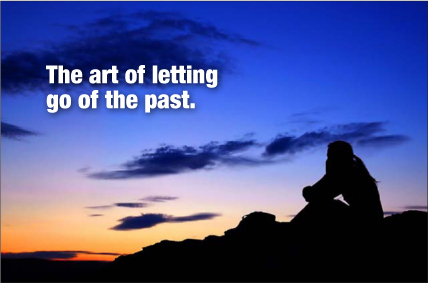Presentation Zen: Simple Ideas on Presentation Design and Delivery, 2nd Edition (Ira Katz's Library) (5 page)
Authors: Garr Reynolds

The skills necessary to be an effective communicator today are different than in the past. Today, literacy is not only about reading and writing—which are necessary—but also about understanding visual communication. Today, we need a higher degree of visual literacy and an understanding of the great power that imagery has for conveying important messages.
People who design visuals for live presentations typically regard PowerPoint as a kind of document-creation tool. Their principles and techniques seem to be largely influenced by the conventional wisdom regarding the proper creation of business documents such as letters, reports, spreadsheets, and so on. Many businesspeople and students approach multimedia slides as if they were nothing more than glorified overhead transparencies that contain boxes for text, bullets, and clip art.
If you want to learn how to become a better presenter, then look beyond the advice given in books about how to use PowerPoint and books on presentation skills (including this one). These books have their place, but you should be looking to other forms of proven visual storytelling as well. Documentary films, for example, tell nonfiction stories that incorporate narration, interviews, audio, powerful video and still images, and at times, on-screen text. These elements can be incorporated into live oral presentations as well. Cinema and presentations are different, but not as different as you may think. I have learned much about the use of imagery in storytelling from watching virtually every documentary Ken Burns ever produced. And there are useful lessons in storytelling and visual communication found in great films such as
Citizen Kane, Casablanca,
Kurosawa’s
Ikiru,
and even the
Star Wars
trilogy.
The art of comics is another place to look for knowledge and inspiration. Comics, for example, are amazingly effective at partnering text and images to form a powerful narrative that is engaging and memorable.
Comics and film are two major ways stories are told through imagery. The principles and techniques for creating a presentation for a conference or a keynote address have more in common with the principles and techniques behind the creation of a good documentary film or a good comic book than the creation of a conventional static business document with bullet points.
Part of the Presentation Zen approach to presenting well is learning to give up what you’ve learned about making presentations in the PowerPoint era with its cookie-cutter method of design and delivery. The first step is to stop allowing our history and conditioning about what we know—or thought we knew—to keep us from being open to other ways of presentation. Seven sentences per slide? Some clip art thrown in for good measure? No one ever got fired for that, right? But if we remain attached to the past, we cannot learn anything new. We must open our minds so that we can see the world for what it is with a fresh new perspective. As the great Master Yoda once suggested (in a galaxy far, far away), we must unlearn what we have learned.

(Image in this slide from iStockphoto.com.)
Exercise
Hold a brainstorming session, alone or with your workgroup, to examine any current views and guidelines you have concerning your organization’s presentations. How are your current presentations off-kilter? In what ways are they in sync? What questions should you be asking about presentation design and delivery that you have not asked in the past? What aspects of the design and delivery process have caused “suffering” for your presenters and your audiences? Have past efforts been focused too much on the inconsequential things? What are the “inconsequential” aspects and where can the focus shift?
• Like a Japanese bento, great slide presentations contain appropriate content arranged in the most efficient, graceful manner without superfluous decoration. The presentation of the content is simple, balanced, and beautiful.
• Presentation Zen is an approach, not an inflexible list of rules to be followed by all in the same way. There are many paths to designing and delivering presentations.
• The key principles of Presentation Zen are: Restraint in preparation. Simplicity in design. Naturalness in delivery. These principles can be applied to both technical and nontechnical presentations.
• The dull, text-filled slide approach is common and normal, but it is not effective. The problem is not one of tools or technique—it is a problem of bad habits. While some tools are better than others, it is possible to present effectively with the aid of multimedia tools.
• In the Conceptual Age, solid presentation skills are more important than ever before. Presenting well is a “whole-mind” skill. Good presenters target people’s left brain and right brain sensibilities.
• Live talks enhanced by multimedia are about storytelling and have more in common with the art of documentary film than the reading of a paper document. Live talks today must tell a story enhanced by imagery and other forms of appropriate multimedia.
• We’ve learned some ineffective habits over the years. The first step to change is letting go of the past.


Such power there is in clear-eyed self-restraint.
—James Russell

In
Chapter 3
, we take a look at the first steps in the preparation stage. But first, let’s take a step back and look at something we usually do not think about when preparing a presentation: creativity. You may not think of yourself as being creative, let alone as a creative professional like a designer, writer, artist, and so on. But developing presentation content—especially content to be delivered with the aid of multimedia—is a creative act.
Most of the students and professionals I meet in classes and seminars around the world say that they are “not very creative.” Some of this is modesty no doubt, but I think most adults genuinely believe this. They have convinced themselves that creative is just not a term they would use to describe themselves. And yet these are adults who do well in their jobs and generally have happy and productive lives. How is it that they believe they are not creative or that their jobs do not require high levels of creativity? On the other hand, if you ask a room full of young children if they are creative, you’ll see just about every hand go up. Pablo Picasso said that “all children are born artists, the problem is to remain an artist as we grow up.” The same can be said for creativity. You were born creative and you still are that creative being today, no matter what your career path. There are many ways to express your creativity, and designing and delivering an effective presentation is one way to do so.
Creating presentations is a supremely creative process—or it should be. It’s as much “right brain” as it is “left brain,” and design does matter. Who said that business and creativity were mutually exclusive? Is business only about managing numbers and administration? Can’t students become better business leaders tomorrow by learning how to become better design thinkers today? Aren’t design thinking, design mindfulness, and creative thinking
valuable aptitudes for all professionals, regardless of their discipline or particular task at hand?

Once you realize that preparing a presentation is an act requiring creativity—not merely the assembling of facts and data in a linear fashion—you’ll see that preparing a presentation is a “whole-minded” activity that requires as much right-brain thinking as it does left-brain thinking. In fact, while your research and background work may have required much logical analysis, calculation, and careful evidence gathering using left-brain thinking, the transformation of your content into presentation form will require that you exercise much more of your right brain.
Zen teachings often speak of the “beginner’s mind” or “child’s mind.” Like a child, one who approaches life with a beginner’s mind is fresh, enthusiastic, and open to the vast possibilities of ideas and solutions before them. A child does not know what is not possible and so is open to exploration, discovery, and experimentation. If you approach creative tasks with the beginner’s mind, you can see things more clearly, unburdened by your fixed views, habits, and what conventional wisdom says it is (or should be). One who possesses a beginner’s mind is not burdened by old habits or obsessed about “the way things are done around here” or with the way things could have or should have been done. A beginner is open, receptive, and more inclined to say “Why not?” or “Let’s give it a shot,” rather than “It’s never been done” or “That’s not common.”
When you approach a new challenge as a true beginner (even as a seasoned adult), you need not be saddled with fear of failure or making mistakes. If you approach problems with the “expert’s mind,” you are often blind to the possibilities. Your expert’s mind is bound by the past; it is not interested in the new, different, and untried. Your expert’s mind will say, “It can’t be done” or “It shouldn’t be done.” Your beginner’s mind will say, “I wonder if this can be done?”
If you approach a task with the beginner’s mind, you are not afraid of being wrong. The fear of making a mistake, risking an error, or being told you are wrong is constantly with us. And that’s a shame. Making mistakes is not the same thing as being creative, but if you are not willing to make mistakes, then it is impossible to be truly creative. If your state of mind is coming from a place of fear and risk avoidance, then you will always settle for the safe solutions—the solutions already applied many times before. And sometimes, the “path already taken” is the best solution. But you should not follow the path automatically without first seeing it for what it really is. When you are open to possibilities, you may find that the most common way is the best way for your particular case. However, this will not be a choice made by habit. You will choose based on reflection and in the spirit of a beginner with fresh eyes and a new perspective.
